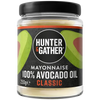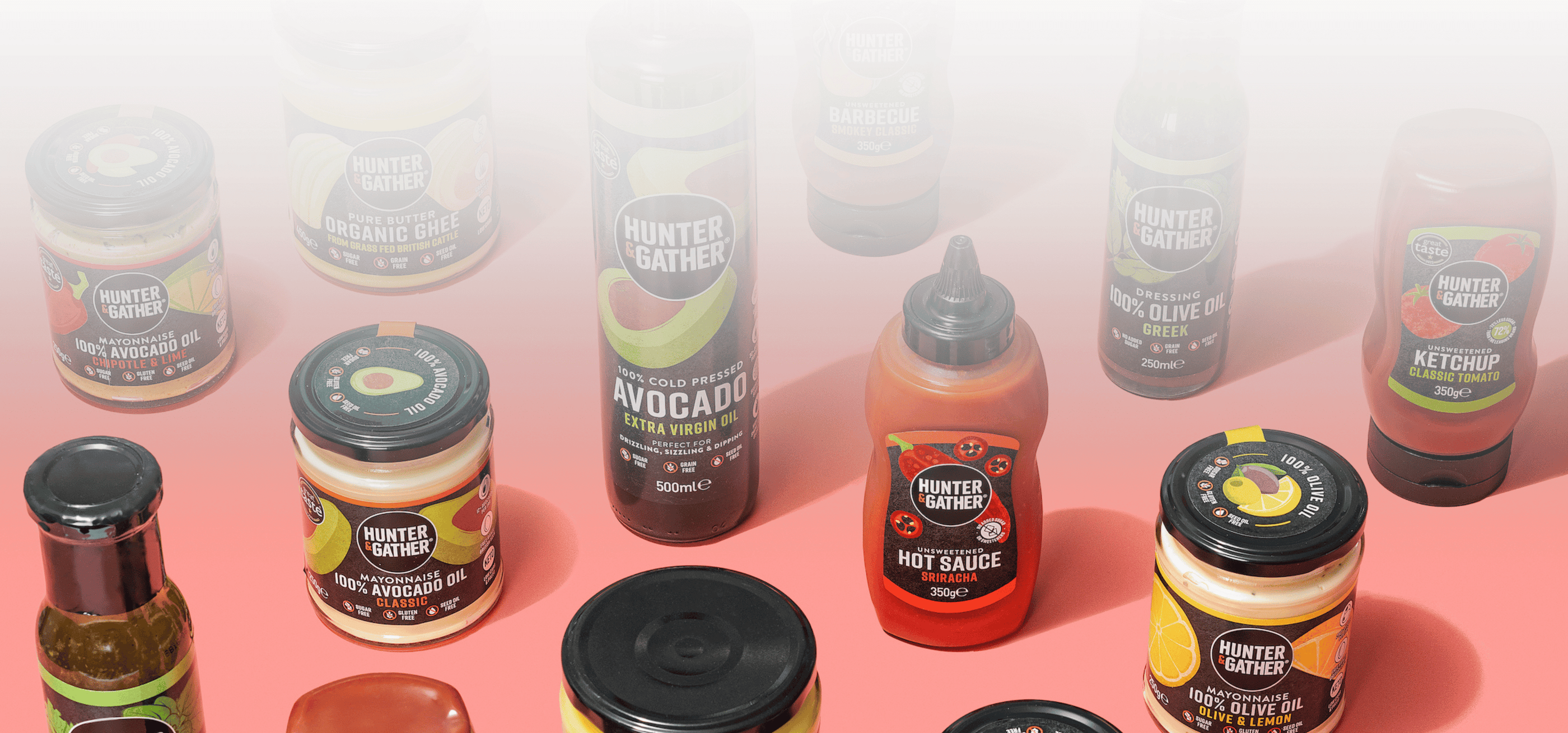Low-carb diets come in many forms — evolving from low-carb to Atkins to paleo, carnivore and now, the keto diet. The ketogenic diet has a few characteristics that separate it from other low-carb diets — including how your body metabolises fat.
The keto diet is a high-fat, low-carb and moderate protein diet. The goal of the keto diet is to transition to a fat-burning state, where your body burns fat — rather than glucose — for fuel.
Advocates of the keto diet praise it for its various health benefits, claiming keto helped them lose weight, burn body fat, think clearly and treat a number of ailments, ranging from IBS to migraines to eczema and acne. If you are one of the many who overheard the benefits of the keto diet, keep reading. Below, we offer a complete guide on the keto diet for beginners in the UK.
Please note: The following information is meant for informational purposes only, and should not be taken as medical advice. Before beginning a new diet, please speak to a nutritionist who questions conventional wisdom
Keto Diet for Beginners UK: What Is the Keto Diet?

The keto diet is a low-carb, high-fat diet. On a keto diet meal plan, roughly 70% of your daily calorie intake will come from fat, 20-25% from protein and 5-10% from carbohydrates, although the exact macro counts will depend on the individual — including their goals and lifestyle.
Here's what separates the keto diet from other low-carb diets: On keto, your goal is to switch your body's energy source. Typically, your body breaks down carbs into glucose for fuel. On keto, you'll deprive your body of carbohydrates, thereby forcing it to choose another form of energy. When carbs are unavailable (i.e., you consume less than 20 grams of carbs per day), your liver will transform stored fat into ketones to be used as an alternative energy source. This metabolic state is known as ketosis.
Unlike Atkins, you will not slowly reintroduce carbohydrates on the ketogenic diet. Instead, keto is viewed as a lifestyle, where you remain in a ketogenic state.
Keto Diet Health Benefits and Drawbacks
Originally, the keto diet was designed in 1924 as a treatment for epilepsy [1]. Since then, scientists discovered a number of health benefits associated with the keto diet, including weight loss (excess fat), reduced risk of Type 2 diabetes and heart disease, improved insulin levels and blood glucose regulation, lower blood sugar levels and blood pressure, and improved fat metabolism [2].
The negative side effects of a ketogenic diet are mild, and typically disappear within 1-2 weeks. When transitioning to a fat-burning state, you may experience cold and flu-like symptoms known as keto flu. Symptoms include nausea, brain fog, headache and difficulty concentrating. Typically, keto flu symptoms subside once your body transitions into a state of ketosis and can be remedied by increasing your salt intake [3].
What Foods Are Included on the Keto Diet?
On the keto diet, you will consume high amounts of fat, moderate amounts of protein and very low amounts of carbohydrates. Therefore, fill your shopping trolly full of these keto foods:
- Healthy fats: Include olive oil, avocado oil, coconut oil, MCT oil, nuts and nut butters, seeds and seed butters, and avocados.
- High-quality protein: Select high-quality protein, including grass-fed beef, pasture-raised pork and poultry, fish, shellfish, eggs and bone broth.
- Low-sugar fruits: Include low-sugar fruits, such as blueberries and raspberries, in small amounts.
- Low-carb veg: Enjoy low-carbohydrate vegetables, including leafy greens and cruciferous vegetables.
- Full-fat dairy products: Choose full-fat, no-sugar-added dairy products, cheese and yoghurt. Avoid milk as the lactose (sugars) are high in carbs - choose full-fat cream instead.
- Low-carb sweeteners: We certainly don’t recommend building a keto meal plan off sweets and treats. That being said, we believe you should make room for celebrations in life — therefore, use only keto-friendly sweeteners that have zero carbs, such as, monk fruit. Or, if you don't have this to hand, we personally prefer to use coconut flakes or vanilla essence to give a low-carb sweeter taste.
Meanwhile, you'll want to leave high-carb foods off your shopping list. Therefore, avoid the following items:
- Grains: Grains are notoriously high in carbohydrates, including bread, oats, rice, quinoa and corn.
- Starchy veg: Avoid starchy vegetables, including sweet potatoes, potatoes, squash and turnips.
- Most fruits: Most fruits (except berries) are high in sugar, and should be avoided on the keto diet, including apples, pears, plums, watermelon and mangos, as well as fruit juice.
- Sweeteners: Avoid all sugars on the keto diet — including natural sugars. White sugar, honey, maple syrup, molasses and coconut sugar should be avoided.
- Legumes: Most legumes are incredibly high in carbohydrates, and should be avoided. This includes black beans, kidney beans, lentils and peanuts — most of which contain lectins, which can cause digestive distress in some people.
- Most alcohol: Most alcohol is made from sugar, and should therefore be avoided. Avoid red and white wine, beer and mixed drinks. Spirits, such as tequila or vodka, can be consumed in moderation. You can also try alcohol-free options, such as Caleno and Seedlip.
Keto Diet Plan for Beginners: 3-Day Keto Meal Plan
On the keto diet, you'll want to increase your fat intake while reducing your carb intake to 20 grams per day. Here are several keto recipes to get you accustomed to this new way of eating:
Day 1
- Breakfast: Smoked salmon tartare burgers
- Lunch: Spicy beef and broccoli bowl
- Dinner: Stuffed pepper keto tuna melt with celeriac chips
- Snack: Soft boiled eggs with asparagus tips and truffled mayo
Day 2
- Breakfast: One pan paleo dinner recipe with beef mince and sweet potato
- Lunch: Keto chicken dippers with a side of roasted vegetables
- Dinner: Warm smoked pepper mackerel with a spinach, cucumber and strawberry salad
- Dessert: Chocolate coconut MCT oil fat bombs
Day 3
- Breakfast: The ultimate keto and paleo caramelised onion frittata
- Lunch: Keto BLT sandwich on cloud bread with roasted kalettes
- Dinner: Keto lettuce wrapped lamb and mint burgers with keto halloumi fries
- Dessert: Paleo 100% dark hot cocoa
Ready for more? Here’s three extra days of printable keto recipes, plus a shopping list and resource guide, all in one free e-book.
Keto Diet for Beginners: Do's and Don'ts of the Keto Diet
Starting any new diet or way of eating is hard. Practise a little grace with yourself and allow yourself time to adapt, taking time to learn and embrace new concepts to ensure you fully understand what you are doing (and why you are doing it).
With that being said, there are several mistakes common amongst keto diet beginners. When starting your low-carb, high-fat eating plan, keep the following items in mind:
- Don't eat too much protein: Keto is not a high-protein diet. In rare instances, eating too much protein can kick you out of ketosis, as your body will break down protein as glucose for fuel in a process called gluconeogenesis. Aim for 1.2 to 1.7 grams per kilogram of body weight (g/kg), which is more than much of our protein-deficient society consumes.
- Do read the labels: Sugar hides everywhere. When selecting any packed food at the store — particularly condiments — be sure to double-check the label for hidden carbs.
- Don't under-eat: When you severely cut down on your carbohydrate intake, it's very easy to under-eat. For this reason, you may want to check your calorie count to ensure you're getting enough nourishment.
- Do focus on high-quality foods: Eating high amounts of fat isn't a free pass to fill your plate with processed meats, low-grade oils (like vegetable oils) or low-quality cheese. Eat the highest quality, nutrient dense foods you can reasonably afford, and don't forget to fill your plate with green veg.
- Don't implement cheat days: Again, keto is meant to be a lifestyle. Don't implement weekend cheat days — instead, focus on eating in a way that allows you to feel and perform your best.
- Do start keto with purging your cupboards: Clean your cupboards and fridge of any processed snack foods, grains and sugars and sweetened condiments.
No Keto Diet in the UK Is Complete Without Hunter & Gather
The keto diet is a high-fat, low-carb diet where your body burns fat and ketones rather than glucose for fuel. The keto diet is associated with a number of health benefits, including weight loss, improved glucose and blood pressure levels and a decreased risk of chronic disease.
When beginning the keto diet, you will be limiting your carb intake to roughly 20 grams of carbs per day. To do this, you'll want to purge your kitchen of any excess carbs, such as grain-based cereals and tinned fruit, crisps and sweetened sauces and condiments.
Searching for keto-friendly products is hard, but Hunter & Gather is here to help. We provide a full line of keto-friendly products, including avocado oil mayo, sugar-free and unsweetened ketchup, avocado oil and sugar-free and unsweetened barbecue sauce. Combine these flavours with our low-carb recipes and you're on your way to a successful keto diet transition.
All information provided on our website and within our articles is simply information, opinion, anecdotal thoughts and experiences to provide you with the tools to thrive.
It is not intended to treat or diagnose symptoms and is definitely not intended to be misconstrued for medical advice. We always advise you seek the advice of a trained professional when implementing any changes to your lifestyle and dietary habits.
We do however recommend seeking the services of a trained professional who questions the conventional wisdom to enable you to become the best version of yourself.
RESOURCES
[1] https://www.ncbi.nlm.nih.gov/pmc/articles/PMC6251269/
[2] https://www.ncbi.nlm.nih.gov/pmc/articles/PMC7480775/
[3] https://www.dietdoctor.com/low-carb/keto/flu-side-effects

















